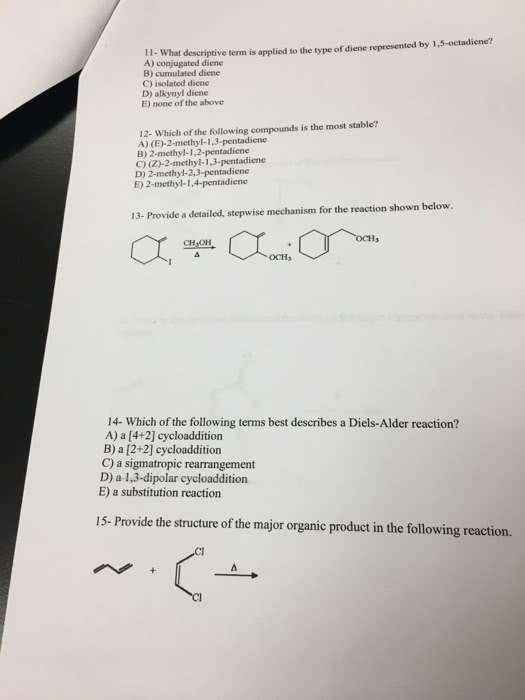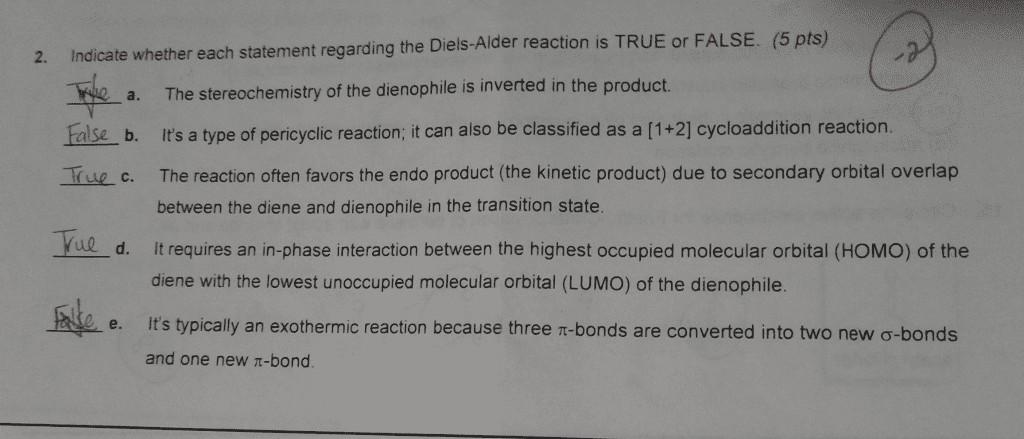CHEM263 Lecture Notes - Lecture 8: Alkene, Cyclohexene, Halogenation
Document Summary
The diels-alder reaction is a [4+2] cycloaddition between a 1,3-diene and a dienophile. The smaller the energy gap between the homo of the diene and the lumo of the dienophile, the better the overlap between these orbitals and the lower the activation energy of the reaction. The diene must adopt s-cis conformation in order to have proper orbital alignment. Better energy match between diene homo and dienophile lumo can be achieved by adding substituents. If diene and dienophile are both unsymmetrical, two products are possible. Regioselectivity can often be controlled by the placement of electron-donating and/or electron-withdrawing groups. Regioselectivity can be predicted by comparing resonance structures. There are 3 important considerations when determining stereochemistry in. Most diels-alder reactions favor the formation of the endo product. Endo selectivity may be due to secondary orbital overlap. A few tips for drawing the endo approach. Draw the dienophile so that the substituent that will be endo points toward the diene component.



